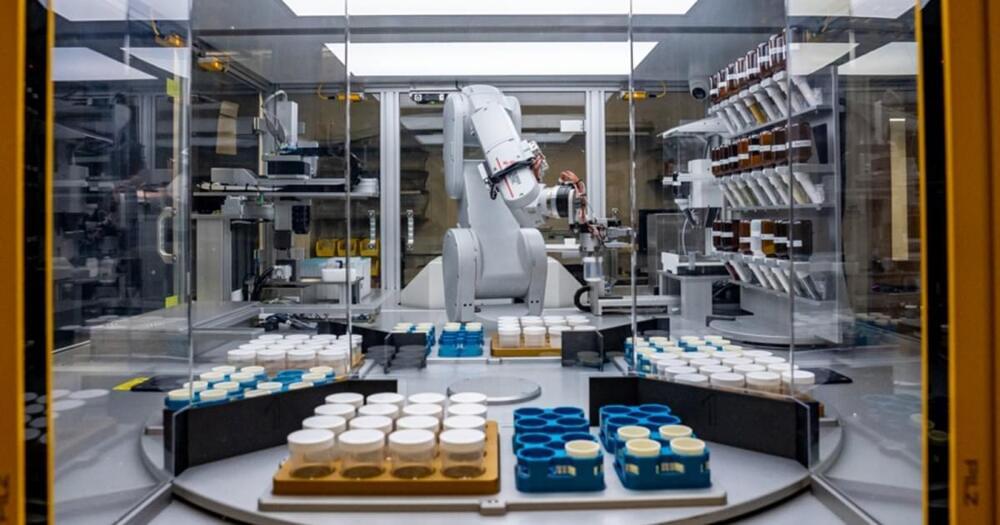Researchers have created an artificial intelligence tool that uses sequences of life events—such as health history, education, job and income—to predict everything from a person’s personality…


The Robots Are Coming https://www.farzadmesbahi.com/merch FREE One Year Supply of Vitamin d3+k2 and 5 AG1 Travel Packs ➡ https://drinkAG1.com/farzad Join this channel to get access to perks:
This timelapse of future technology begins with 2 Starships, launched to resupply the International Space Station. But how far into the future do you want to go?
Tesla Bots will be sent to work on the Moon, and A.I. chat bots will guide people into dreams that they can control (lucid dreams). And what happens when humanity forms a deeper understanding of dark energy, worm holes, and black holes. What type of new technologies could this advanced knowledge develop? Could SpaceX launch 100 Artificial Intelligence Starships, spread across our Solar System and beyond into Interstellar space, working together to form a cosmic internet, creating the Encyclopedia of the Galaxy. Could Einstein’s equations lead to technologies in teleportation, and laboratory grown black holes.
Other topics covered in this sci-fi documentary video include: the building of super projects made possible by advancing fusion energy, the possibilities of brain chips, new age space technology and spacecraft such as a hover bike developed for the Moon in 2050, Mars colonization, and technology predictions based on black holes, biotechnology, and when will humanity become a Kardashev Type 1, and then Type 2 Civilization.
To see more of Venture City and to access the ‘The Future Archive Files’…
• Timelapse of Future Technology (Master List)
• Encyclopedia of the Future (Entries)
…visit my Patreon here: / venturecity.

As the prominence of Artificial Intelligence (AI) continues to rise in our society, so do the concerns about its implications. Therefore, addressing these fears requires a multi-faceted approach, combining careful design, transparent practices, robust regulation, and thoughtful ethical guidelines.
Below is a list of 20 potential effects AI could have on society, concerns raised by many, and how they could or are currently being overcome.
Ultimately, the goal is to navigate the AI-driven future responsibly, building a society where technology serves human needs effectively and ethically.


A group of researchers in Japan have found yet another interesting way to use AI technology. In a recent research project led by a team from the National Institutes for Quantum Science and Technology (QST) and Osaka University, they were able to translate human brain activity to depict mental images of objects, animals, and landscapes. They released pictures from the research, and the results are pretty astounding.
One of the images that the AI technology was able to decode from the brain activity was a vivid depiction of a leopard with detailed features like spots, ears, and more. Another image depicted an airplane. While we have previously had technology that is able to recreate images from brain activity, this is one of the very few studies that were able to make these mental images visible.
Of these previous studies, the images that could be decoded were fairly limited into several categories, like human faces, letters, and numbers. This new AI brain-decoding technology seems to be able to decode a much broader spectrum of images from the human mind. As the researchers in the study point out, “visualizing mental imagery for arbitrary natural images stands as a significant milestone.”
Quanta Magazine’s full list of the major computer science discoveries from 2023.
In 2023, artificial intelligence dominated popular culture — showing up in everything from internet memes to Senate hearings. Large language models such as those behind ChatGPT fueled a lot of this excitement, even as researchers still struggled to pry open the “black box” that describes their inner workings. Image generation systems also routinely impressed and unsettled us with their artistic abilities, yet these were explicitly founded on concepts borrowed from physics.
The year brought many other advances in computer science. Researchers made subtle but important progress on one of the oldest problems in the field, a question about the nature of hard problems referred to as “P versus NP.” In August, my colleague Ben Brubaker explored this seminal problem and the attempts of computational complexity theorists to answer the question: Why is it hard (in a precise, quantitative sense) to understand what makes hard problems hard? “It hasn’t been an easy journey — the path is littered with false turns and roadblocks, and it loops back on itself again and again,” Brubaker wrote. “Yet for meta-complexity researchers, that journey into an uncharted landscape is its own reward.”
Elon Musk discusses various topics including the declining legacy media market, the success of X platform, the importance of free speech and accurate information propagation, the challenges of public companies, the future of AI, the impact of cryptocurrency, and the potential of autonomous vehicles.
Questions to inspire discussion.
What does Elon Musk discuss about the declining legacy media market?
—Elon Musk discusses the lack of understanding from mainstream media about the big stories and accomplishments of SpaceX and Tesla, as well as the success of X platform.

Japanese researchers have created and open-sourced a flying firefighting hose that levitates and steers itself to fight fires using its own water pressure as a two-part propulsion system, spraying water down onto fires and keeping operators safe.
The “flying dragon” system has two four-nozzle propulsion units built in – one at the end of the hose, one maybe 3 m (10 ft) back. Each of these can be thought of as something like a watery quadcopter – valves and swivels on each nozzle control flow and direction of thrust, allowing it to rise, balance and steer itself in the air the way a regular drone might … Well, two drones really, connected with a heavy rope and dragging a heavy tail.
A maximum flow rate of 6.6 liters (1.5 gal) per second gives pressure ratings up to 1 megapascal (145 psi). That’s enough to lift the hose some 2 m (6.6 ft) above the last thing it’s been draped on. The hose on the prototype at this point is just 4 m (13.2 ft) long, and runs back to a little control station trolley, where an operator stands and drives the thing.